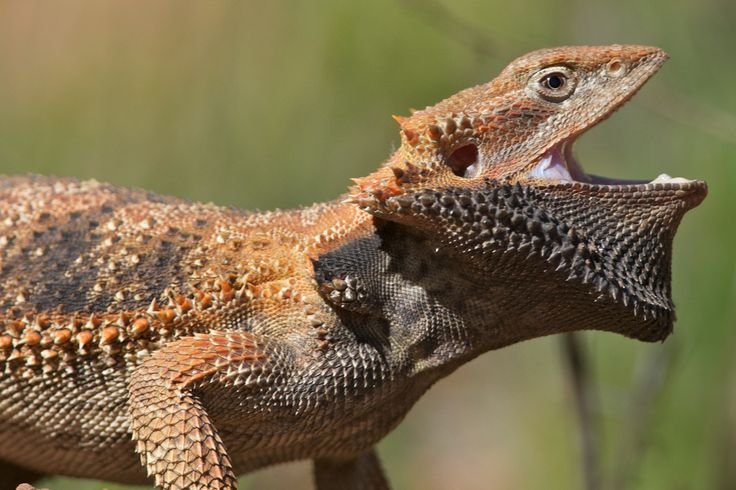
Taming an aggressive or nervous bearded dragon is much like building a friendship. It requires trust, understanding, and time. Just as you wouldn’t rush a friend into deep conversations right away, you shouldn’t rush your bearded dragon either. Let’s dive into some effective strategies to create that bond and help your little buddy feel more at ease.
Understand Why Your Bearded Dragon is Aggressive or Nervous
Before getting into how to calm your dragon down, let’s explore why it might be acting out. Bearded dragons can be aggressive or nervous for several reasons, which often stem from fear or stress. Imagine being in a completely new environment where you’re unsure who’s around or what’s happening. That’s how your bearded dragon might feel!
Common causes of aggression or nervousness include:
- Improper Handling: If they’re picked up too roughly or too often, it can create stress.
- Noise and Activity: Loud sounds or a busy household can overwhelm them.
- Health Issues: Sometimes, underlying health problems can cause irritability.
Recognizing these triggers can help you address the issue. Here’s the thing: bearded dragons are creatures of habit. When their environment changes or they feel threatened, their instinct is to react. Understanding these behaviors provides a solid foundation for building trust.
Create a Safe and Comfortable Environment
Once you understand the potential causes of your bearded dragon’s behavior, it’s time to create a more welcoming space. Think of your bearded dragon’s habitat as its personal sanctuary. Just like you’d want a cozy nook to relax in after a long day, so does your pet.
Start by ensuring the enclosure is the right size—at least 40 gallons for adults. Ensure there are places to hide, such as caves or logs, where they can retreat when feeling insecure. A few tips to make the habitat feel more secure include:
- Provide hiding spots: Use decorations that create nooks and crannies.
- Ensure a proper temperature gradient: A basking area and a cooler zone help them regulate body temperature.
- Avoid bright lights and loud sounds.
Setting up a comfortable environment helps your bearded dragon feel safe, setting the stage for successful taming. With that comfort, they’ll be more open to interacting with you.
Gently Approach Your Bearded Dragon
Now that the environment is set, it’s time to start the taming process. Gently approaching your bearded dragon is essential. Picture this: if you were a bearded dragon and someone suddenly reached in to grab you, it might send you into a panic. Instead, think of how you’d want someone to approach you.
Start by letting your dragon get used to your presence. Spend time sitting by the tank, talking softly. You might be wondering how this helps, but, honestly, lulling them into a sense of comfort is crucial. After they seem more relaxed, try the following:
- Extend your hand slowly, palm up, letting them come to you.
- Avoid sudden movements—allow them to come to you at their own pace.
- Once they’re comfortable, gently scoop them up with both hands, supporting their body.
Be patient during this step. It may take days or even weeks before they’re comfortable being held, but that’s perfectly normal; every dragon is unique.
Establish Regular Handling Routines
Now that you’re on the right track, let’s talk about creating a routine. Bearded dragons thrive on consistency. Think of this as establishing a comforting rhythm.
Aim for regular, short handling sessions to build trust. Here’s a simple structure you might follow:
- Start Small: Begin with 5-10 minutes of handling every couple of days.
- Increase Gradually: As your bearded dragon becomes more comfortable, slowly increase the time.
- Observe Their Behavior: If they show signs of stress (like puffing up or trying to escape), give them a break.
This regular interaction helps them learn that your presence is safe, which lowers anxiety over time. Plus, it’s a great way to bond!
Positive Reinforcement and Rewards
Just like training any pet, positive reinforcement works wonders for bearded dragons, too! Rewards can encourage calm and friendly behavior. It’s like saying, “Hey, you did a great job!”
When handling your bearded dragon, offer treats like crickets or leafy greens. Associating your presence with something delightful shifts their mindset. Here’s how to do it effectively:
- Give a small treat when they exhibit calm behavior.
- Use a soft voice and gentle strokes to reinforce positive interactions.
- Avoid forcing them into situations they aren’t comfortable with.
Building positive associations will make handling even more enjoyable for your bearded dragon. They’ll come to see you as a source of comfort and fun!
Addressing Health Concerns
If you’ve tried the previous steps and your bearded dragon is still aggressive or nervous, it might be time to consider health issues. Just like us, they can experience discomfort or illness that affects their behavior.
A visit to a reptile vet can help rule out any health problems. Common issues include:
- Internal parasites: These can cause pain and stress.
- Infections: Lethargy may signal an underlying issue.
- Improper diet: Nutritional imbalances can lead to health problems, making them irritable.
The vet can guide you on dietary adjustments and other solutions to keep your bearded dragon happy and healthy. Remember, a healthy dragon is usually a more relaxed one!
Be Patient and Persistent
Lastly, the most important piece of advice? Be patient! Taming an aggressive or nervous bearded dragon won’t happen overnight. It’s a journey that requires consistency and understanding.
Embrace the small victories—every step forward counts. If they take a few steps back, that’s okay too! Think of it as a dance; sometimes the rhythm changes, and that’s part of the process.
Keep the interactions calm, stay attuned to their body language, and remain steady in your approach. Over time, you’ll likely see your bearded dragon transform into a more friendly and relaxed companion.
Building trust and taming an aggressive or nervous bearded dragon might seem daunting, but it’s incredibly rewarding. By taking a gentle approach, creating a comforting environment, establishing routines, and using positive reinforcement, you’ll foster a bond that lasts. Your little dragon can become a beloved member of your family, ready to share wonderful moments with you.
So, roll up your sleeves, grab those crickets, and start the journey toward a happier, calmer bearded dragon!

